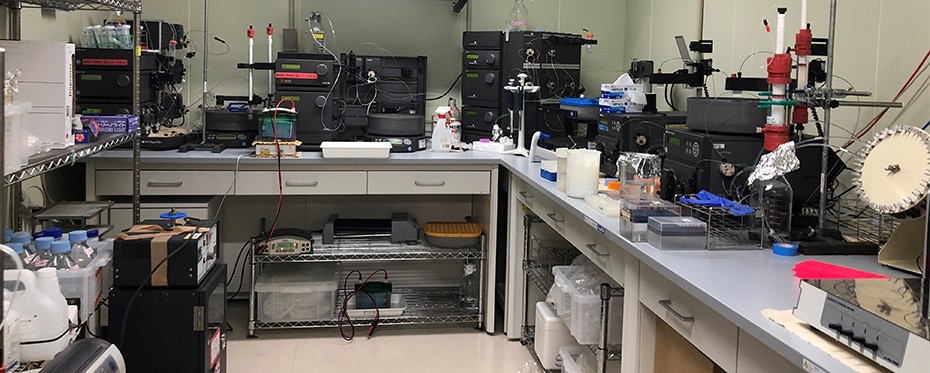Tag: ATP
The heart of the matter: Elamipretide in the treatment of Barth syndrome

Barth syndrome (BTHS) is an ultra-rare but debilitating genetic disease affecting cell mitochondria. High infant mortality due to cardiac complications and a weakened immune system significantly decrease life expectancy. Current medications treat symptoms but not the cause, leaving an unmet clinical need to develop effective treatments that target the underlying pathology. Dr Hani N Sabbah, Professor of Medicine at Wayne […]
Read More… from The heart of the matter: Elamipretide in the treatment of Barth syndrome
Energy transformation in living cells: The role of vitamin C

The biochemical processes responsible for energy production in cells and for its utilisation in cellular metabolism have been studied extensively. Although several details of how these complex chemical reactions take place have progressively been clarified, far less is known about the structure of the biomolecules involved and their interactions. Professor emeritus János Hunyady, from the University of Debrecen, Hungary, is […]
Read More… from Energy transformation in living cells: The role of vitamin C
Dihydromyricetin shows promise as anxiety disorder treatment

Anxiety disorders are one of the most common mental illnesses, and social isolation can be a major source of contributing stress. Medications to treat these disorders, such as benzodiazepines, are available; however, they come with a range of downsides. In a recent study in mice, Prof Jing Liang’s team at the USC School of Pharmacy in the US discovered that […]
Read More… from Dihydromyricetin shows promise as anxiety disorder treatment
When control is lost: Studying the interactions of ATP and acetylcholine in the urinary bladder

The inner lining of the bladder, known as the urothelium, not only serves as a passive barrier but also triggers the reflex controlling urination (the micturition reflex). The neurotransmitter ATP released from the stretched urothelium activates the bladder afferent nerves and evokes the release of acetylcholine that substantially contributes to the contractile response. Prof Gunnar Tobin from the University of […]
Fragment-based design of isoquinoline derivatives as anti-inflammatory drugs

Fragment-based drug discovery (FBDD) is a well-established high-throughput screening method for drug generation. Fragment molecules used in FBDD tend to be structurally less complex than the compounds used in conventional high-throughput screening techniques. Dr Masakazu Atobe from Asahi Kasei Pharma Corporation in Japan and his colleagues have developed a methodology that can be applied to the discovery of effective drugs […]
Read More… from Fragment-based design of isoquinoline derivatives as anti-inflammatory drugs
Uncovering critical cell death mechanisms for novel cardioprotective therapies

Cell death is part of a natural process by which old cells are replaced by new, but it can also result from disease or injury. There are still many aspects of this process which are not fully understood. The laboratory of Dr Jason Karch, Baylor College of Medicine, aims to increase comprehension of the mechanisms behind cell death. If these […]
Read More… from Uncovering critical cell death mechanisms for novel cardioprotective therapies
More than a just a simple powerhouse: Structure and function of mitochondria

Mitochondria are well-known as the “powerhouse” of the cell – but these organelles have many other vital functions. Mitochondria are also heterogeneous, differing in structure and function. Dr Kasturi Mitra of the University of Alabama, Birmingham, Alabama, USA, leads a research team focused on understanding the relationship between structure and function of mitochondria, in both health and disease. Dr Mitra’s […]
Read More… from More than a just a simple powerhouse: Structure and function of mitochondria
Dancing DNA: How Rad51 chooses the perfect partner

Professor Hiroshi Iwasaki, Tokyo Institute of Technology, aims to learn more about a biological process called homologous recombination, which is crucial to maintaining the integrity of DNA. His laboratory-based research means that we can learn more about this process and a key protein called Rad51. An increased understanding of this complex mechanism could be translated to the DNA repair processes […]
Read More… from Dancing DNA: How Rad51 chooses the perfect partner
The serendipitous discovery of a new green chemistry method

Dr Petri Turhanen was working on a synthesis of a modified version of the biological molecule adenosine triphosphate (ATP), when he discovered that the cation exchange resin he was using was unintentionally producing another molecule. Closer investigation revealed that the molecule had been iodinated, meaning an iodine atom had been added. This specific reaction is challenging to perform using current […]
Read More… from The serendipitous discovery of a new green chemistry method